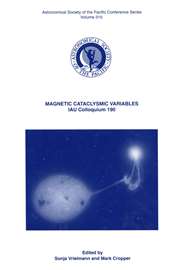Article contents
The Micrometeoroid in the Upper Atmosphere
Published online by Cambridge University Press: 12 April 2016
Abstract
The temperature and the radius variation of micrometeoroids in the thermosphere and the mesosphere are calculated theoretically. If the radius and the initial velocity are 100 μm and 30 km/sec respectively, the evaporation height and the velocity coincide almost exactly with those of the Capricornids and the Virginids from the meteor stream observation.
Moreover, it is shown that the not evaporated debris till the end of the sublimation may become spherules in the bottom of deep sea; and that fluffy micrometeoroids (10μ size) floating in the stratosphere are also consistent with our calculation.
The recondensation and the coagulation of the evaporated gas molecules from the meteoroid are also calculated, and it is shown that these secondary particles are very small and few.
Information
- Type
- Meteoroids and Meteor Streams
- Information
- International Astronomical Union Colloquium , Volume 126: Origin and Evolution of Interplanetary Dust , 1991 , pp. 303 - 306
- Copyright
- Copyright © Kluwer 1991
References
- 1
- Cited by

